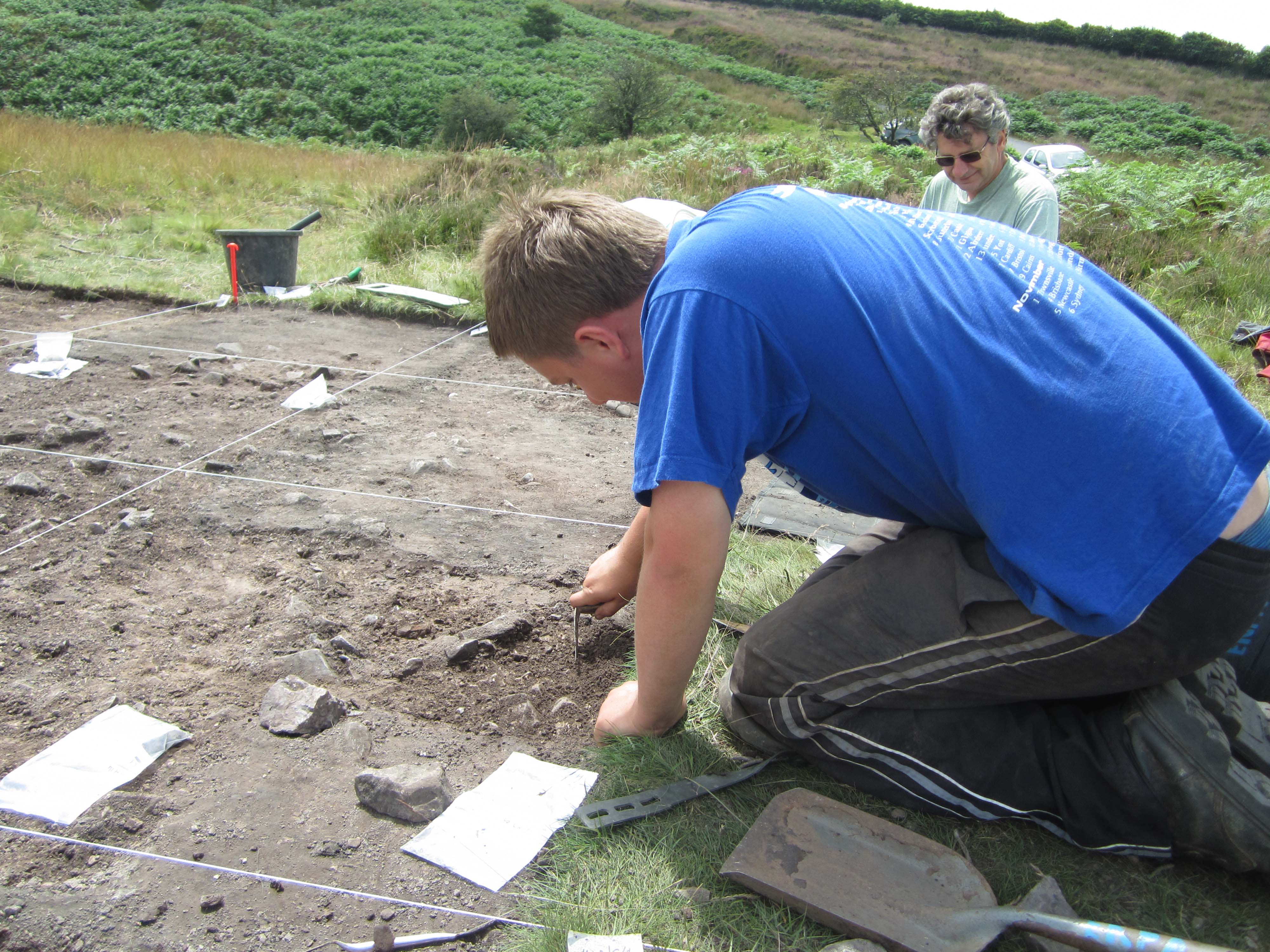

Tony Roberts brought us up to date with local excavations and projects in Gloucestershire, with an emphasis on the Community Projects that he runs. He outlined how to run one’s own project and showed how aerial photographs reveal sites. Local groups are important in carrying out this initial research, using the National Mapping Programme that maps archaeology from air photographs. He emphasised the ability of Lidar (Light Detection and Ranging) and how the ground surface can be reproduced without tree cover.
Geophysical surveys were carried out at Campden House, Chipping Campden, in the parterre garden. A stone wall of 1603 was discovered together with 2 banqueting houses on each site. This was destroyed in the Civil War, but the parterre garden showed regular, laid-out paths to a central point. The archaeology showed that Kip’s engraving was wrong and geophysics showed the footprint of a house and an additional archway.
An example of working with metal detectorists occurred at Linton Farm, Over, when a Roman Road was found. A community dig took place, with geophysics at Robinswood Hill.
At Guiting Power, near Cheltenham, metal detectorists found a lot of metal and following this, some geophysics was carried out. The survey suggested a large ditched enclosure plus pit groups. Test pits were dug for dating purposes. The base of a kiln was found, with late Iron Age pottery close by. Also found were ditches full of Roman material, including a brooch and a necklace. Also found were 14th Century coins and a glass bead from a ditch that was late Iron Age/Roman.
At Miserden, east of Stroud, metal detectorists recovered Iron Age brooches, Roman coins and Viking horse tack. A large area was surveyed using geophysics, which revealed deep ditches of late Iron Age/Roman date. Overall, on this site there were few finds, for example, there were pits with no finds and only one coin from Trajan (1st Century AD). The question is, did the detectorists take all the objects?
At Doynton Villa, a geophysical survey was carried out and more trenches were dug from the previous year. Evidence of domestic animal husbandry was found in discrete areas, together with roof tiles, box flue tiles and the stacked stones of a hypocaust. Several burials contained sheep skulls and 2 spindle whorls; a pair of sheep’s legs were found in each corner of the room. There was also a plunge pool and drains. The finds include a fibula, bracelets, coins, a bone hairpin. There was painted plaster from the bath house.
At Hanging Hill, Upton Chainey, a geophysical survey revealed Roman remains. Previous finds included pottery and coins, together with painted plaster and an intaglio piece. Excavation will start again in August 2015.
Tony explained that his excavations are funded by County Councils, local Councils and Bristol City Council, together with HLF grants and local societies. He also runs digs for paying volunteers.
More information is available on-line at www.archeoscan.com
